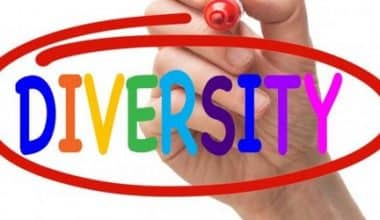Becoming a product owner can be a rewarding and fulfilling career choice, with a competitive salary, opportunities for a certificate, and a crucial role in the Scrum framework, the product owner position offers many advantages for those interested in product development. It’s important to note that while there are similarities between a product owner vs a product manager, they are distinct positions with different responsibilities. So, if you’re considering a career in product management, it’s crucial to understand the differences between the two roles.
What Is a Product Owner vs Project Manager?
The roles of product owner vs product manager are often used interchangeably, but they are distinct roles with different responsibilities. Here are the key differences:
A product owner is responsible for managing the product backlog and ensuring the development team delivers value to customers. They work within the Scrum framework, prioritizing features, and providing guidance to the team during sprints.
A project manager, on the other hand, is responsible for managing the overall project, including the budget, timeline, and resources. They work closely with stakeholders, ensuring that project goals are met and coordinating with different teams to ensure successful delivery. While there may be some overlap in responsibilities, the product owner’s focus is on executing the vision within the Scrum framework, while the project manager has a broader responsibility for overseeing the entire project.
In some organizations, the product owner vs product manager roles may be combined into a single role, while in others they may be separate roles with different reporting structures and responsibilities.
Skills and Certifications a Product Owner Needs
Product owners should be able to listen, think critically, make decisions, and lead. They should also be able to empower the Scrum team and engage developers in problem-solving. Scrum.org. The Scrum Alliance are respectable organizations that provide product ownership certification. A product ownership certification might be especially useful for someone who is taking on this role for the first time or transferring from another software development paradigm.
Is Product Owner a Technical Role?
The product ownership role requires a combination of business and technical skills. While technical expertise is not always necessary, having a solid understanding of the technology and development process can be beneficial in communicating with the development team and making informed decisions about the product backlog.
However, the primary focus of product ownership is on managing the product backlog, prioritizing features based on customer value, and ensuring the development team delivers a high-quality product that meets customer needs. While technical knowledge is certainly helpful, it is not the sole focus of the role. Rather, product ownership is a key player in ensuring the team is delivering value to the customer within the Scrum framework. In terms of salary, a product owner can also earn a competitive salary, and obtaining a product owner certificate can increase career opportunities.
What Are the 3 Main Responsibilities of Product Owners?
Product owners have three primary responsibilities:
#1. Manage the Product Backlog
The product owner is in charge of generating and maintaining the product backlog, which is also a prioritized list of the product’s features and requirements. Working closely with stakeholders to understand customer wants, market trends, and business goals, and turning these into actionable items for the development team, is required.
#2. Prioritize Features
The product owner must prioritize the features to be built based on the product backlog and ensure that the team is focused on delivering the most valuable items first. This necessitates a thorough awareness of consumer requirements, as well as the capacity to reconcile technological limits, market demands, and corporate objectives.
#4. Ensure Customer Value
Product ownership is in charge of ensuring that the development team provides value to the customer. This entails collaborating closely with stakeholders, getting input, and also monitoring product success to ensure that it meets customer needs and generates business results. To guarantee that the team is delivering the most value to the client, the product proprietor must be able to make data-driven choices and alter the product backlog as needed.
Finally, the product ownership’s main responsibilities include managing the product backlog, prioritizing features based on customer value, and ensuring the development team delivers a high-quality product that meets customer needs, which can lead to a competitive salary and obtaining a product owner certificate. There may be some overlap between the Product Owner vs Product Manager roles, the former focuses on executing the vision within the Scrum framework, while the latter is responsible for the overall strategy and vision for the product.
What Are the 5 Levels of Product Owner?
There are no official levels of product ownership in the Scrum framework. However, some organizations and individuals have defined different levels based on experience and responsibilities. Here are five possible levels of product ownership:
#1. Junior
This is typically an entry-level position where the product proprietor is responsible for supporting the lead owner in managing the product backlog and gathering requirements. However, ensuring that the development team has a clear understanding of what needs to be built.
#2. Associate
An associate product owner is typically responsible for managing a smaller product or a subset of a larger product. They work closely with the lead product ownership to develop and prioritize the product backlog and gather requirements. However, ensuring that the development team is focused on delivering value to the customer.
#3. Lead
This is the most senior product owner role, responsible for managing the entire product backlog, setting the strategic vision for the product, and working closely with stakeholders. However, to ensure that the product is meeting business goals and customer needs.
#4. Technical
A technical product owner is responsible for ensuring that the development team has a deep understanding of the technical requirements for the product. They work closely with the development team. However, to ensure that the product is being built to the highest technical standards and that the team is using the most appropriate technologies.
#5. Domain/Product Expert
A Domain/Product expert is responsible for having a deep understanding of a specific industry or product area. They work closely with stakeholders to ensure that the product meets the specific needs of that industry. Also, to ensure that the development team has the necessary expertise to build the product to the required standards.
What Are the 6 Stances of a Product Owner?
As a product owner, there are six stances or perspectives you need to adopt to succeed in your role. The six stances are:
#1. Visionary
The visionary stance involves creating and also communicating a clear product vision that aligns with the organization’s goals and values.
#2. Strategist
The strategist stance involves developing and executing a strategy to achieve the product vision, including identifying target customers, defining product features, and also setting pricing and release schedules.
#3. Customer Representative
The customer representative stance involves advocating for the needs of customers and users. Also, ensuring that their feedback is incorporated into the product backlog.
#4. Team Collaborator
The Team Collaborator stance involves working closely with the development team to ensure that they have a clear understanding of the product vision. However, customer needs and that they are delivering high-quality features on time and within budget.
#5. Value Maximizer
The Value Maximizer stance involves continuously prioritizing the product backlog to ensure that the most valuable features are being developed first. Also, the product is delivering maximum value to the customer and the organization.
#6. Business Strategist
The business strategist’s stance involves ensuring that the product is aligned with the organization’s overall business strategy and that it is delivering a positive return on investment.
How to Become a Product Owner
Becoming a product owner involves a combination of education, experience, and skills. Here are the steps to take:
- Obtain a relevant degree or certification in product management or a related field.
- Gain experience in product development or management, ideally in a technology or software environment.
- Develop skills in communication, collaboration, strategic thinking, and problem-solving.
- Learn about agile methodologies such as Scrum, and specifically the role of the product owner.
- Consider obtaining a certification such as the Professional Scrum Product Owner (PSPO) from Scrum.org.
- Network with other product owners and attend industry events to stay up-to-date on trends and best practices.
- Apply for product owner positions and demonstrate your ability to lead product development and achieve business goals.
Can a Product Owner Manage People?
As a product owner, you are responsible for managing the product development process, but not necessarily people. Here’s why:
- The product owner’s role is primarily focused on ensuring that the product vision is realized and that customer needs are also met.
- The development team is responsible for the actual implementation of the product features.
- While the product owner works closely with the development team, they do not typically have direct managerial authority over team members.
- However, the product owner should be able to provide feedback and guidance to the development team on their work.
- If there are issues with team performance or productivity, the product owner may work with the scrum master to address these issues.
- Ultimately, the success of the product development process depends on collaboration and effective communication between the product owner and the development team.
Product Owner Certificate
The Product Owner Certificate is a certification offered by various organizations to individuals who demonstrate an understanding of the principles and practices of product ownership in Agile software development.
The most well-known certification program for Product Owners is offered by Scrum.org. The certification offered by Scrum.org is called Professional Scrum Product Owner (PSPO) and there are three levels of certification: PSPO I, PSPO II, and PSPO III. These certifications also require passing an exam that assesses knowledge of Agile principles, Scrum framework, product management, and product ownership practices.
Roles of Product Owner
Here are some of the key roles and responsibilities of a Product Owner:
- Responsible for developing and also maintaining a clear product vision that matches the broader aims and objectives of the organization.
- Collaborate with stakeholders to define the product’s needs and ensure that they are properly conveyed to the development team.
- In charge of prioritizing the items in the product backlog based on their business value, market needs, and other considerations.
- Communicates the product plan, progress, and also status updates to stakeholders as the principal point of contact.
- In charge of ensuring that the product adds value to users’ lives and satisfies their needs and expectations.
- Collaborates closely with the development team to provide guidance and clarify needs while also ensuring that the product is produced in accordance with the vision and priorities.
FAQs
What makes someone a product owner?
The product owner is solely responsible for defining and even prioritizing user needs. To explain the product features that will be implemented, the product owner must communicate with the development team.
Who is in charge of product owners?
In practice, who the product owner reports to is determined by the size and organizational hierarchy of the company.
What are the skills of a product owner?
Product ownership skills are required to act as a link between the development and business teams. Agile and Scrum practitioners rely on communication, leadership, and analytical thinking skills to create product goals.
Related Articles
- PRODUCT BACKLOG: Definition, Examples, Management & Difference
- WHAT IS SCRUM: Definition, Principles, and Purpose
- AGILE PROJECT MANAGEMENT TOOLS: Definition, Uses, And List of APM
- Project Management Tools: Best 25+Tools and Techniques
- PRODUCT MANAGER SKILLS: Top Product Manager Skills
- RESTAURANT HOSTESS: Meaning, Duties, Outfit, & How to Become One
- HOW TO CHOOSE A CAREER: Complete Guide for Young People and Adults






